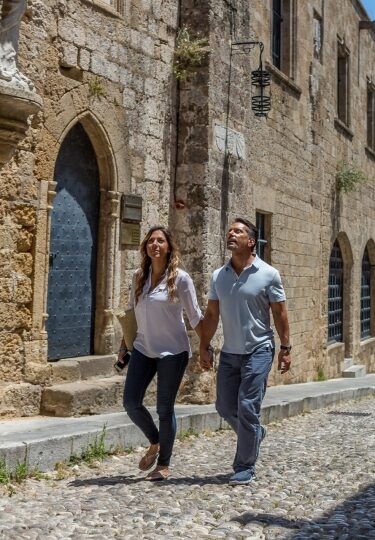Many towns on the Greek Islands retain a very similar feel, but not so Rhodes Old Town. Instead of typically white-washed cubist houses and blue church domes, what is thought to be Europe’s longest-inhabited medieval town is a gorgeous mishmash of imposing stone castles, elegant mansions, Gothic and Byzantine churches, and vast squares.
All this is united by winding streets, some of which have no name, meaning that getting lost is a rite of passage in a walled town that begs to be explored.
Here then are 16 things to see and do in the wonderful Old Town of Rhodes.
Get a Flavor of the Old Town From Outside
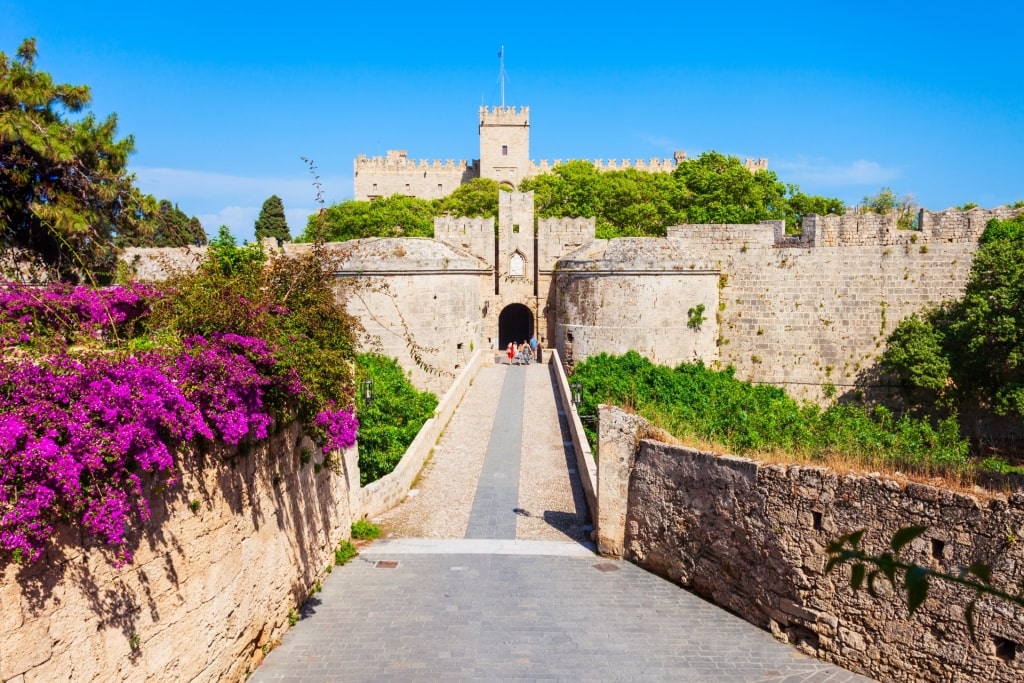
Rhodes Old Town
It might seem a strange place to start a visit, but given the size of the Old Town, one of the best ways to get an idea of its stature is to see it from modern Rhodes, outside the chunky walls.
The Greek castle was built by the Crusader Knights Hospitaller (also known as the Knights of St John) in the 1300s and its exterior is surrounded by pleasant gardens lined with trees.
There are some fabulous photo opportunities to be had from these exterior locations of the walls and ramparts that really put the Old Town into context with its surroundings.
Take in the Majesty of the Palace of the Grand Master of the Knights
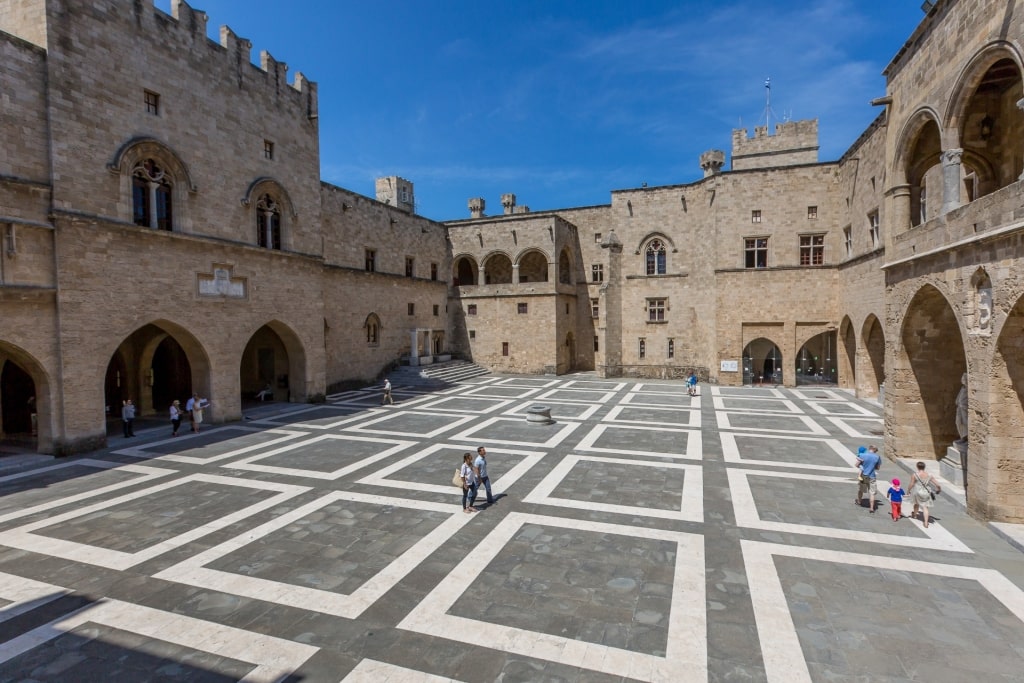
Palace of the Grand Master of the Knights
This town-within-a-town is built on the site of a late seventh-century Byzantine citadel but really came to life when the Knights Hospitaller arrived from Jerusalem in the early 1300s, making it both a fortress, an admin center and the palace of the order’s Grand Master.
The palace has since had a checkered history, first as an Ottoman stronghold, then as a curious ruined artifact before becoming a summer residence for the King of Italy (who restored its former glory) and the fascist dictator Benito Mussolini in the late 1930s and ’40s.
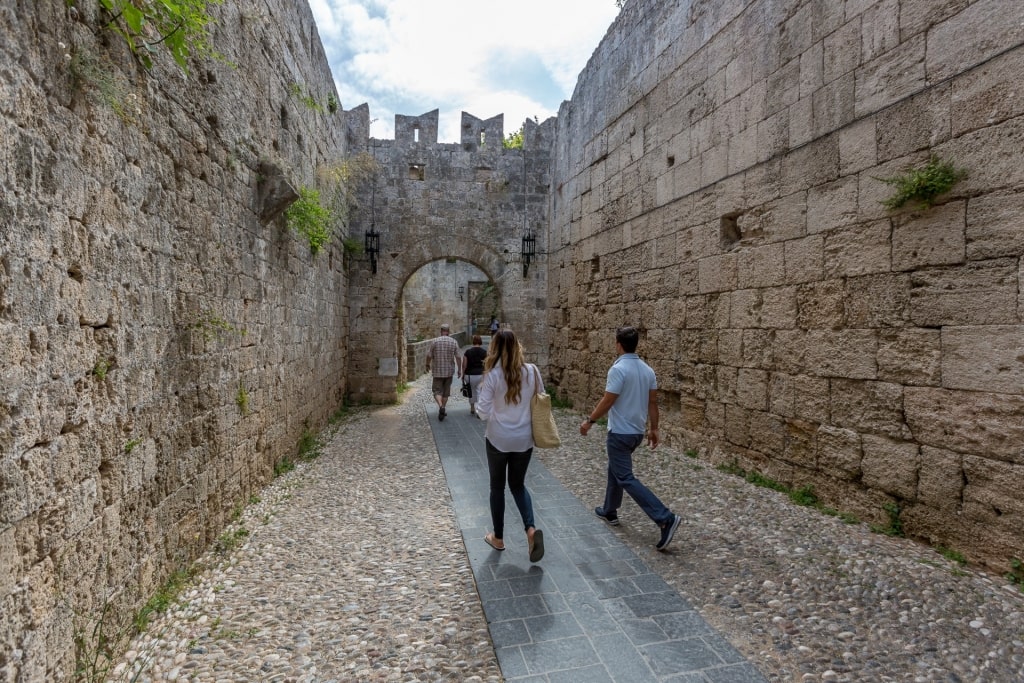
Palace of the Grand Master of the Knights
This Greek landmark is now a UNESCO World Heritage Site, a living and breathing museum with 24 of its 158 rooms open to the public, all featuring 17th-century antiques and ancient Roman and Byzantine art. There are also extensive grounds to explore.
Stroll Along the Street of the Knights
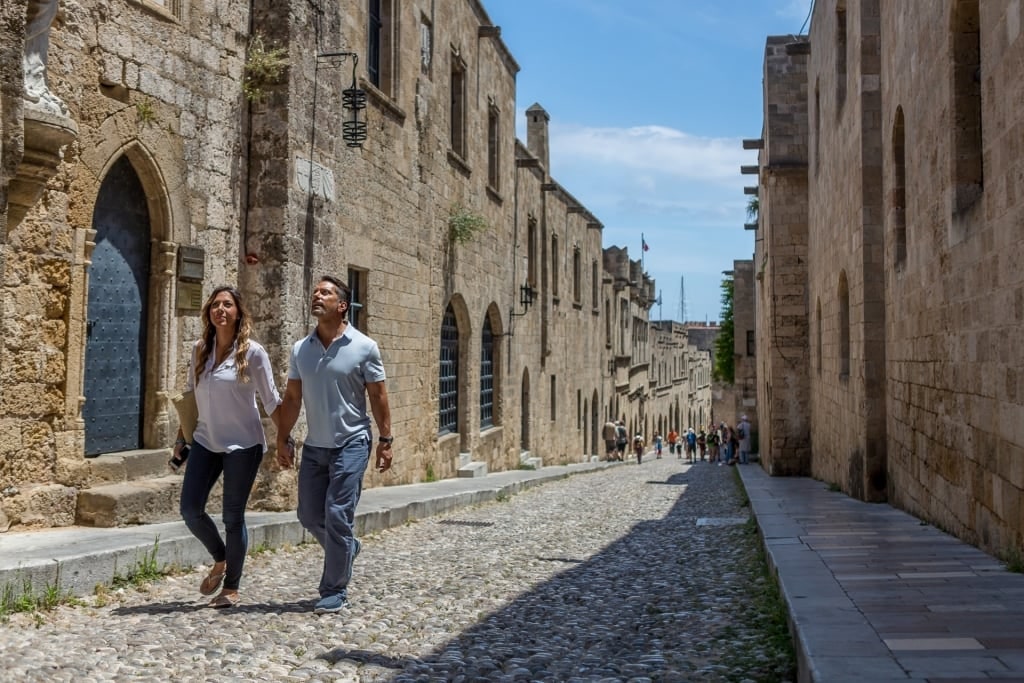
Street of the Knights
Running for around 650 yards in an almost perfect east to west direction from the Palace of the Grand Master to the Hospital of the Knights is this most famed street in the Old Town.
Thought to be built on an ancient path that connected the port with the Acropolis of Rhodes, the cobbled street was built by the Knights Hospitaller to house seven inns, one for each of the main countries or languages that made up the order.
These magnificent buildings still stand today, many of them featuring inscriptions in the language of the various sub-orders, a highlight being the Auberge de France, which was given special attention in its building as the majority of the knights were francophone.
Sample Ancient History at the Archaeological Museum of Rhodes
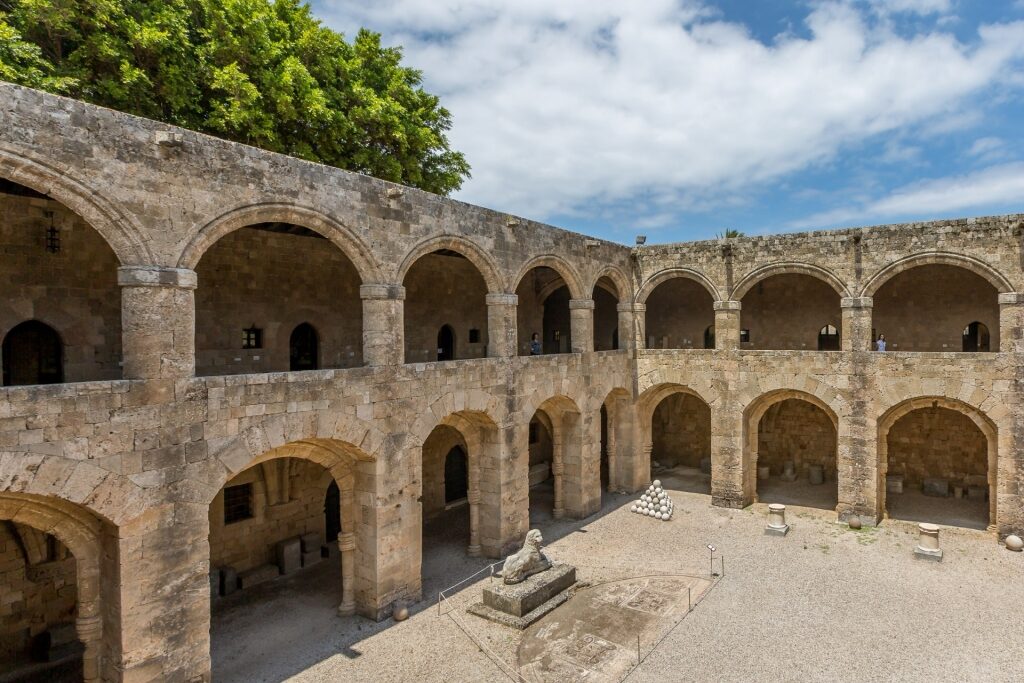
Archaeological Museum of Rhodes
One of the Knights’ original missions was to care for sick, injured and poor in their first home in Jerusalem, and that deep dedication can be seen in the building that houses Rhodes’ fine Archaeological Museum.
Set around a courtyard and fronted by a magnificent edifice, what was the Knights’ hospital is surely one of the island’s finest buildings. Today, it houses an impressive collection of works: burial finds from as early as the ninth century BC, exquisite mosaic floors, and funeral slabs from the time of the Knights.
Two of the best exhibits that are must-sees are the world-renowned marble head of Helios (the sun god worshiped by the islanders) and a marble statuette of Aphrodite Bathing. Both are thought to date from the second to first century BC.
Climb the Clock Tower
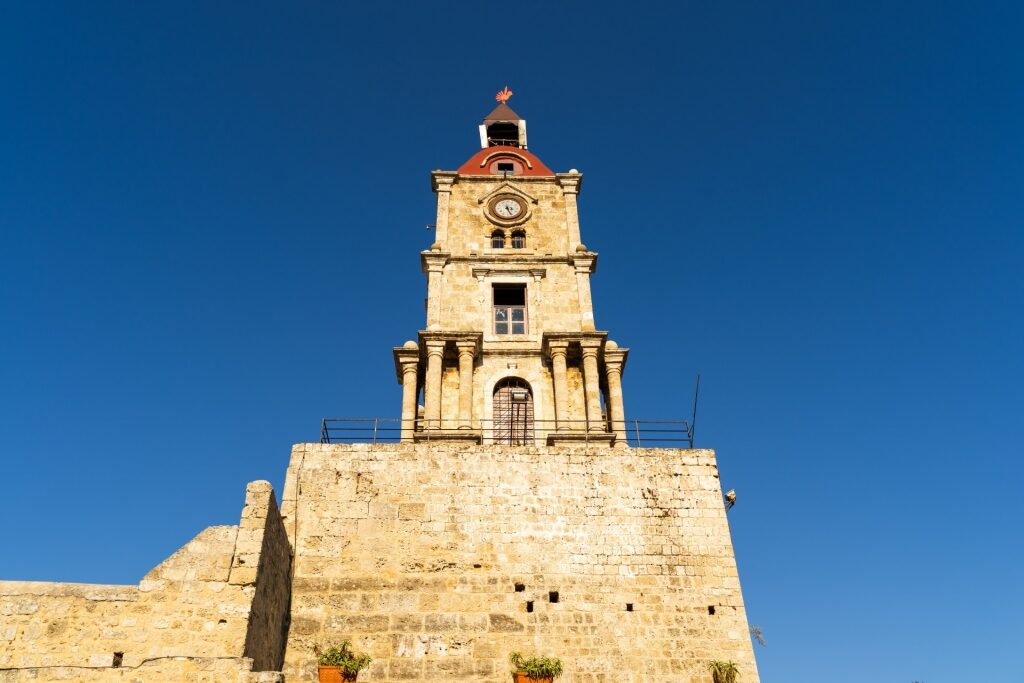
Clock Tower
Originally built in the seventh century and rebuilt in the 1850s by the occupying Ottomans to let the Greeks know the Turkish time, the Old Town’s central clock tower is also its highest point.
There are 53 steep wooden steps to get to a chamber at the top that offers almost 360-degree views of the surrounding buildings—views that can only be seen if you drop to your knees as the windows are so low.
The climb can be thirsty work; luckily the entrance fee includes a drink at the café set at the tower’s base.
Take Refreshments at Ippokratous (Hippocrates) Square
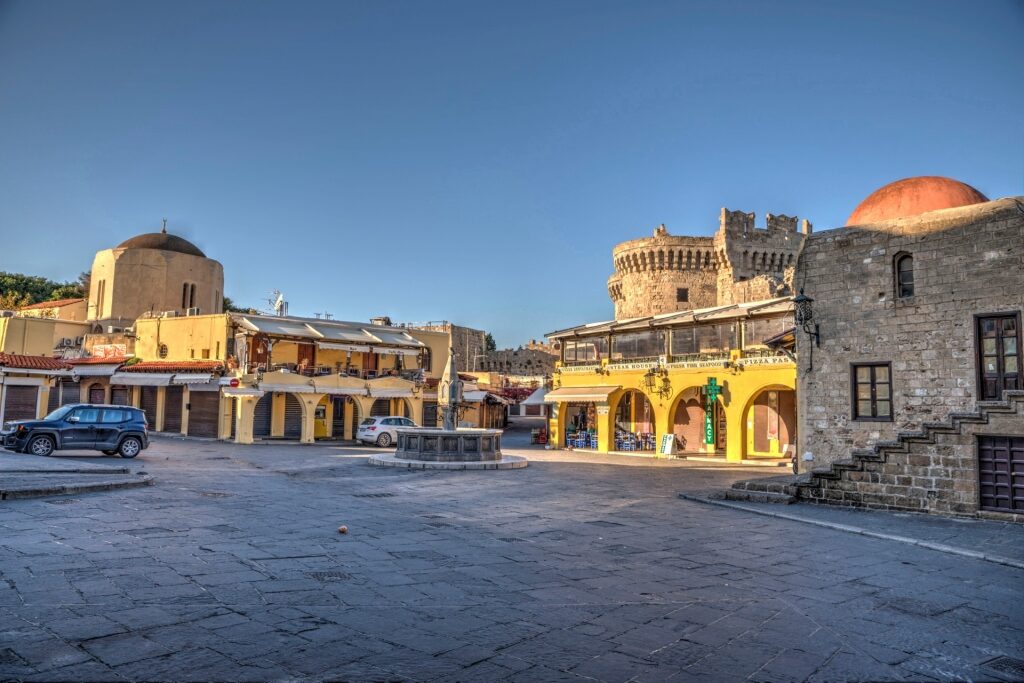
Ippokratous Square
At the heart of the old walled city is this bustling square, home to a central ornamental fountain and a grand staircase. The 14th-century building now houses Rhodes’ Municipal Library which hosts a real treasure trove of books, maps and other publications, as well as a music department and space for performances.
The square is lined with all manner of cafés, bars and restaurants, and is an ideal spot for a refreshing drink or a steaming Greek coffee, paired with some great people watching.
Enjoy Modern Art in Medieval Surrounds
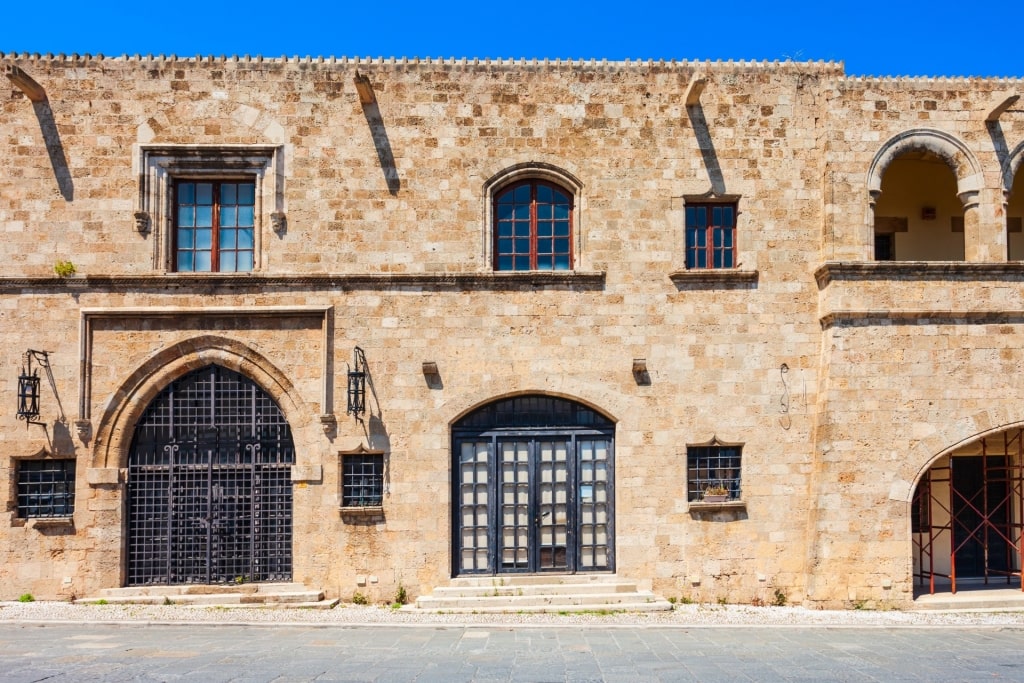
Municipal Art Gallery of Rhodes
Set by the Freedom Gate entrance to Rhodes Old Town and overlooking Simi Square sits the Municipal Art Gallery of Rhodes, housed in an elegant building with imposing arched windows.
Its medieval façade hides a quite different interior, though. The gallery houses an authoritative collection of works by 20th-century Greek artists. The museum owns almost 700 pieces, with 90 by the likes of Fotis Kontoglou, Spyros Vassiliou, Yannis Spiropoulos on display at any one time.
Read: Most Beautiful Medieval Cities in Europe
Souvenir Shop on Sokratous Street
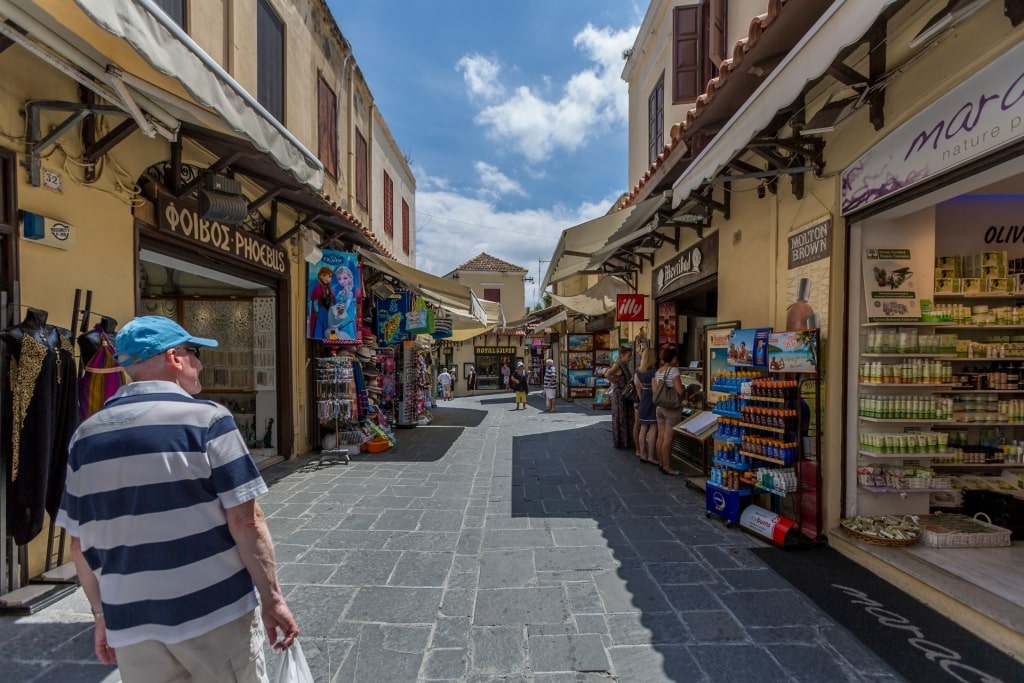
Sokratous Street
Much like the Street of the Knights, Sokratous Street runs east to west through the Old Town, from Ippokratous Square to The Suleymaniye Mosque.
Unlike the Street of the Knights though, which can feel conservative and imposing, Sokratous Street has a more laid-back feel thanks to the fact that it’s the Old Town’s commercial thoroughfare.
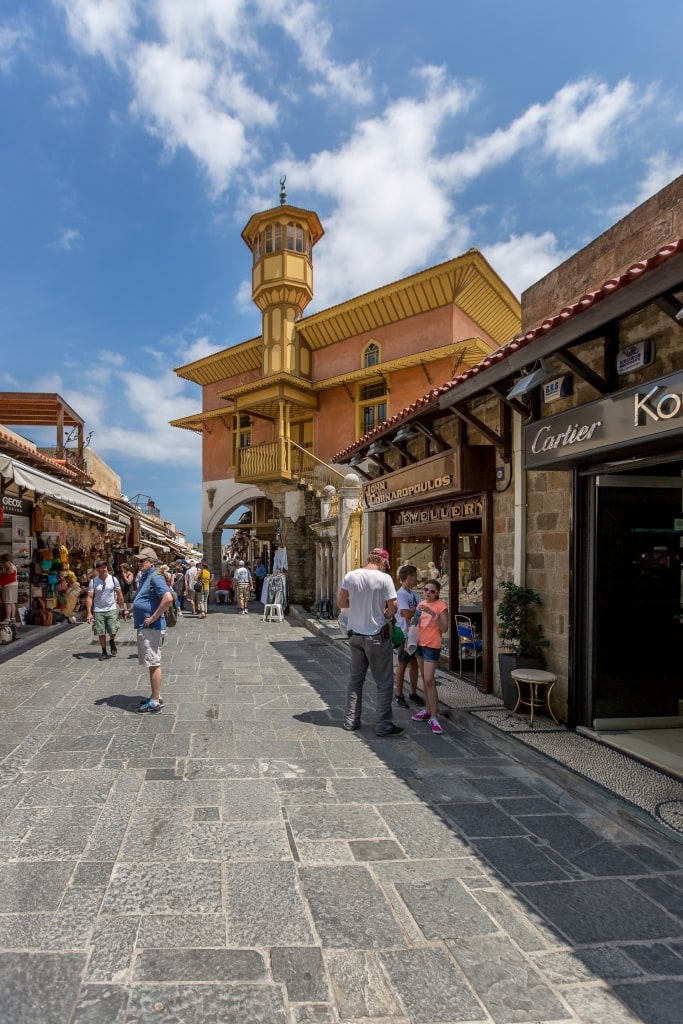
Sokratous Street
The cobbled street’s low-rise medieval buildings host a wide range of stores, from high-end gold and silversmiths, to shops selling t-shirts and flip flops, and everything from art galleries to liquor stores along the way. A number of cafés are dotted around for when you need a break from shopping for Greek souvenirs.
See the Suleymaniye Mosque
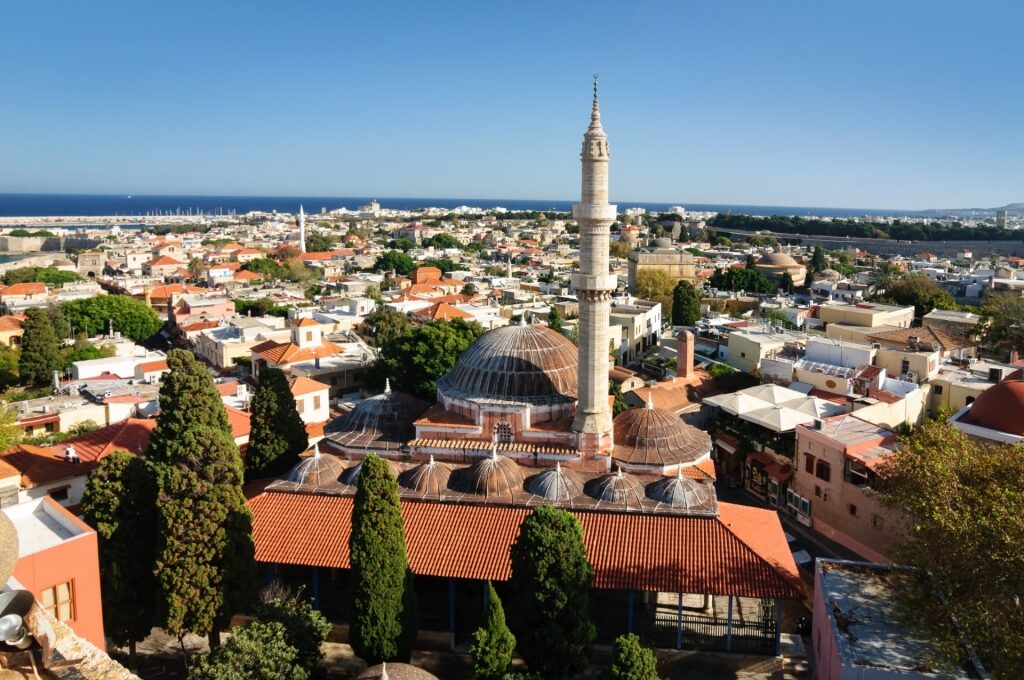
Suleymaniye Mosque
On the western end of Sokratous Street and close to the Clock Tower lies this reminder of almost 400 years of Ottoman rule that began on January 1, 1523, when the vastly outnumbered Knights Hospitaller abandoned the island after an almost six-month siege and fled to Crete.
This consolidation of Ottoman rule in the eastern Mediterranean led to the construction of this mosque which takes its name from Sultan Suleiman the Magnificent.
Today’s building mainly dates from an 1808 reconstruction, and its dome, minaret, and pink plaster contrast sharply with other buildings in the surrounding area. The mosque no longer acts as a place of worship, instead housing a small period-era museum.
Enjoy Ancient Ruins at the Temple of Aphrodite
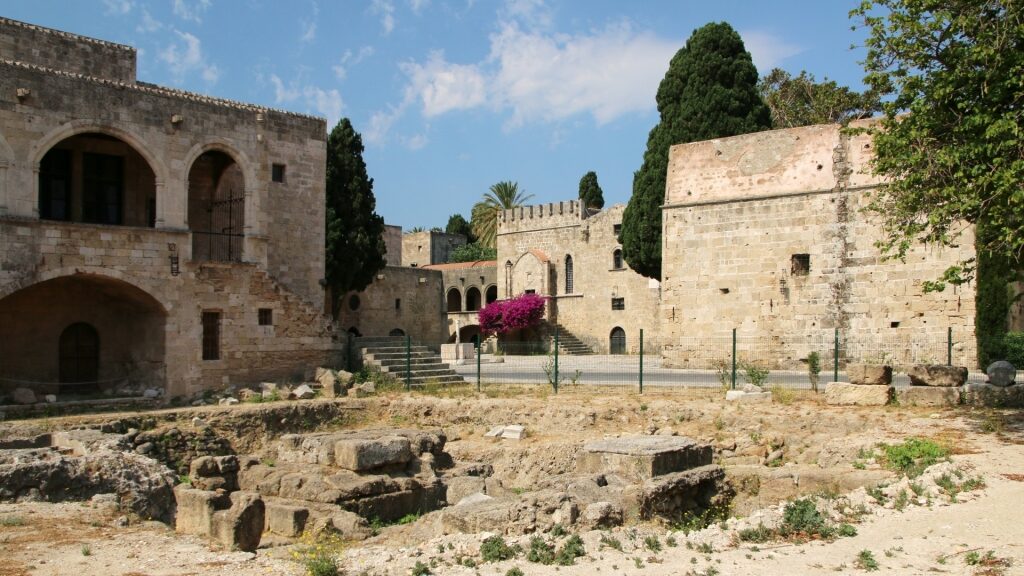
Temple of Aphrodite
Much of Rhodes Old Town’s charm lies in the mixture of Gothic and Ottoman architecture, but part of ancient Greece remains here in the form of the small but engaging Temple of Aphrodite.
Dedicated to the daughter of Zeus and Dione, Aphrodite is said to be the patron of ports and it’s thought that an ancient port may once have been situated here, given the ocean is less than 100 yards away.
The site only takes around 10 minutes to see but the juxtaposition of so many architectural styles in such a small area makes it worthwhile.
Walk Around the Church of the Virgin of the Burgh
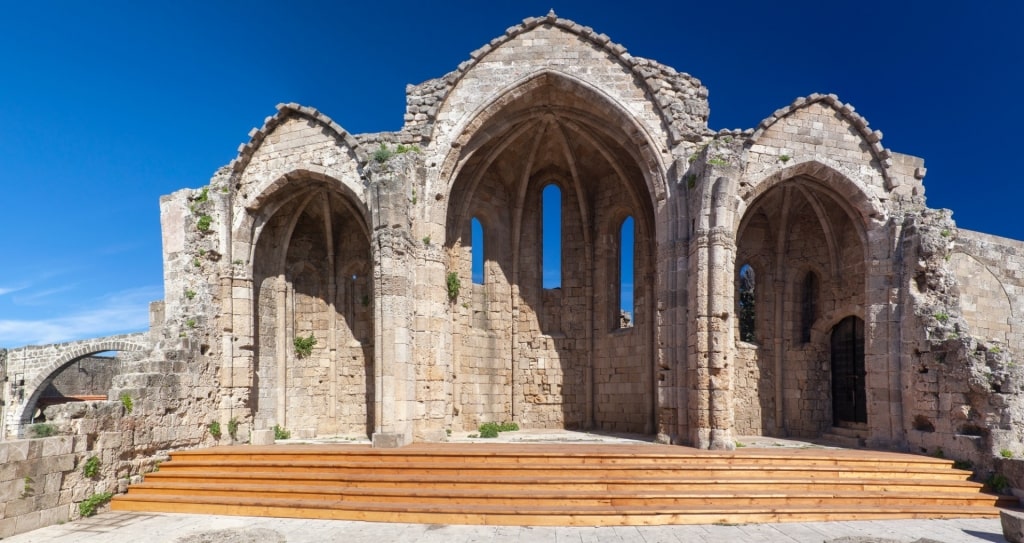
Church of the Virgin of the Burgh
In the Jewish Quarter on the eastern edge of Rhodes Old Town lie the remains of what was once Rhodes’s largest church, despite it being of the Catholic denomination, rather than the presiding Greek Orthodox religion.
Built by the Knights in the early 1300s, only three of its impressive Gothic apses have survived World War II bombing raids. No longer a church, the building has become a haven for artists over the years, and it’s not unusual to see painters setting up their easels here.
Select Your Favorite Gate
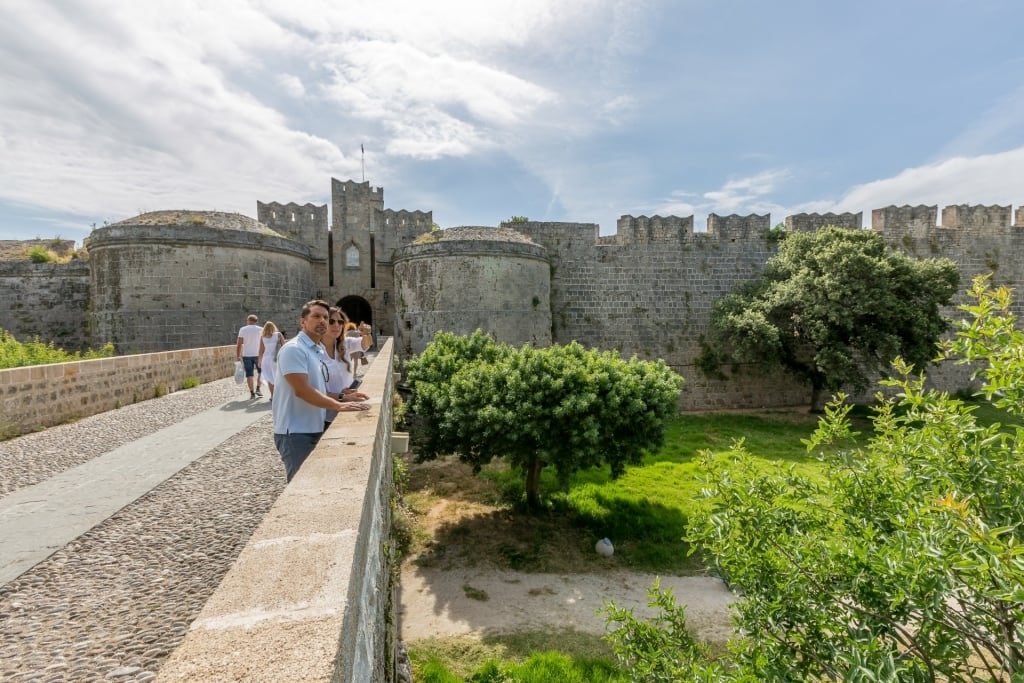
Gate d’Amboise
The walls of the Old Town contain eight defensive bastions and towers, while you can enter through any one of 11 gates, each with its own history.
Three of the most impressive are the Gate of St John, the Gate d’Amboise and the Marine Gate. The Gate of St John is known as the Porta Kokkini (red door) as it’s said that in the Ottoman siege of 1522, so many men fell here that the stones turned red.
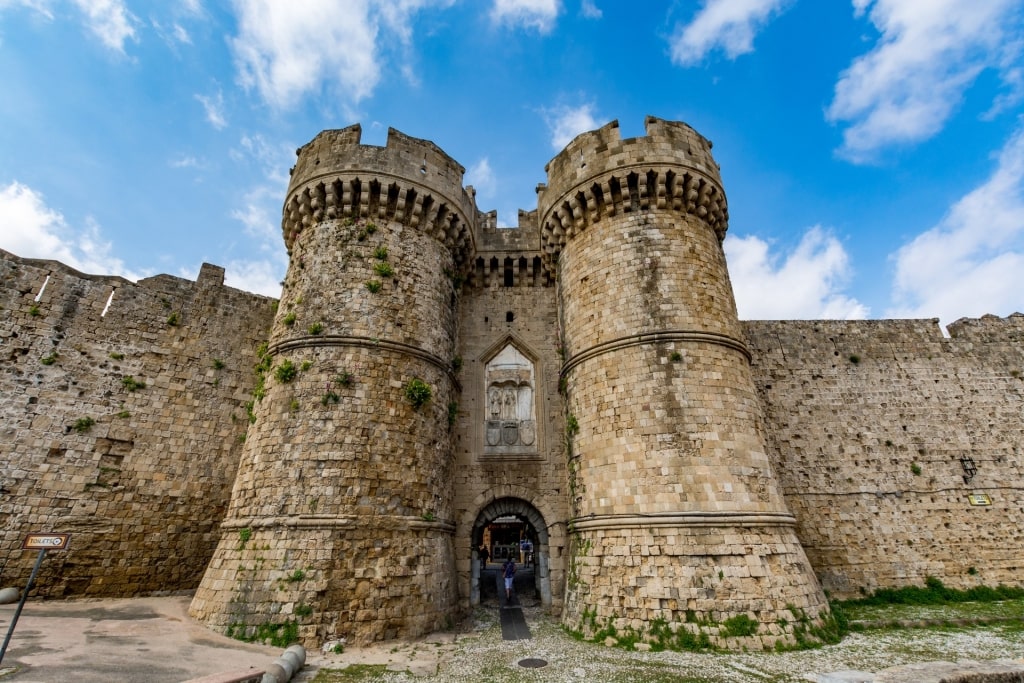
Marine Gate
The Gate d’Amboise is probably the most impressive architecturally, thanks to the long walkway that leads up to its covered entrance, which is guarded by two vast, round towers.
Marine Gate, meanwhile, gave access to the harbor. With its towers so close to the water, it was virtually unbreachable until it was damaged by World War II bombs. Alongside the neighboring Gate of Saint Paul, it was rebuilt in the post-war 1950s.
Be Humbled in the Jewish Quarter
Rhodes’ Jewish community dates from the second century BC, stamping its presence on the Old Town and reaching a 1920s height of some 4,500, despite many leaving to seek better opportunities in the United States.
The German invasion of the island in 1943 saw 1,673 of the community arrested and taken to concentration camps, where just 151 survived.
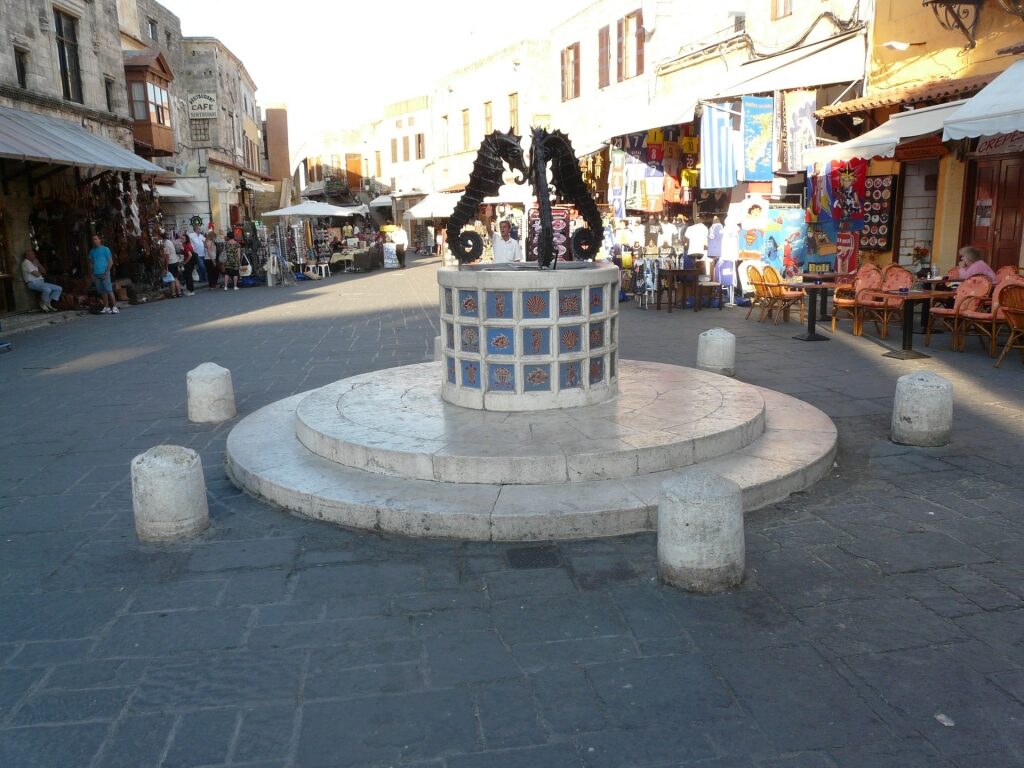
Square of the Jewish Martyrs Photo by Piotrus on Wikimedia Commons, licensed under CC BY-SA 2.0
In their honor, the Square of the Jewish Martyrs was built on a site that was previously home to Jewish shops that were destroyed during the war. It now features a Holocaust Memorial, dedicated to those islanders who lost their lives at the hands of the Nazis..
Guess the Location of the Colossus of Rhodes
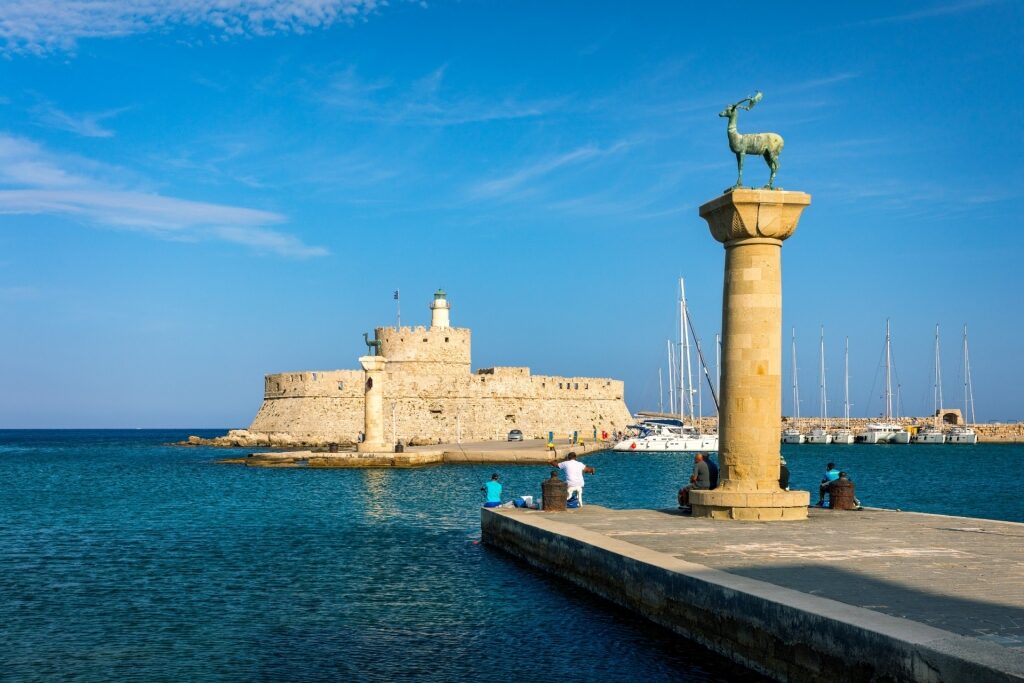
Mandraki Port
The Colossus of Rhodes was one of the Seven Wonders of the Ancient World, built in 280 BC to stand guard some 110 feet over Rhodes in honor of the sun god Helios.
Thought to have been destroyed by an earthquake in 226 BC, its potential location is debated fiercely by locals and historians. Some believe it stood on the Palace of the Grand Master, while others believe the town’s former military harbor Mandraki was a more suitable location for the statue.
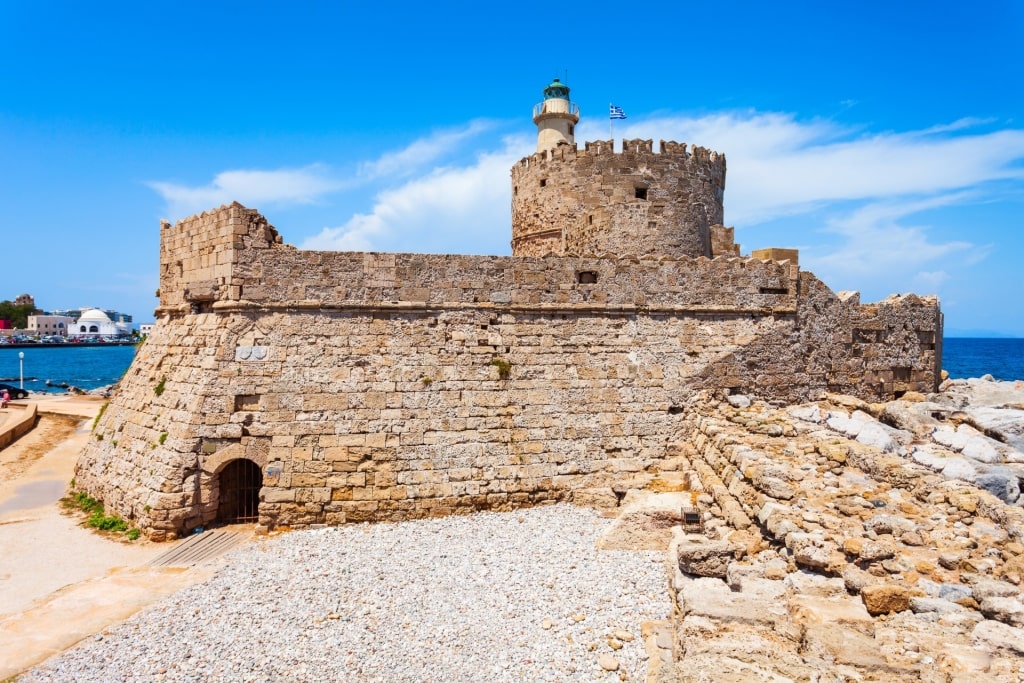
Agios Nikolaos
The harbor is now also the location of one of Rhodes’ other fortresses, Agios Nikolaos, which the Knights Hospitaller built to guard against Ottoman Invasion from the water. The castle now serves as a lighthouse and is home to a lamp dating from the 17th century.
See the Ocean From the Windmills of Mandraki
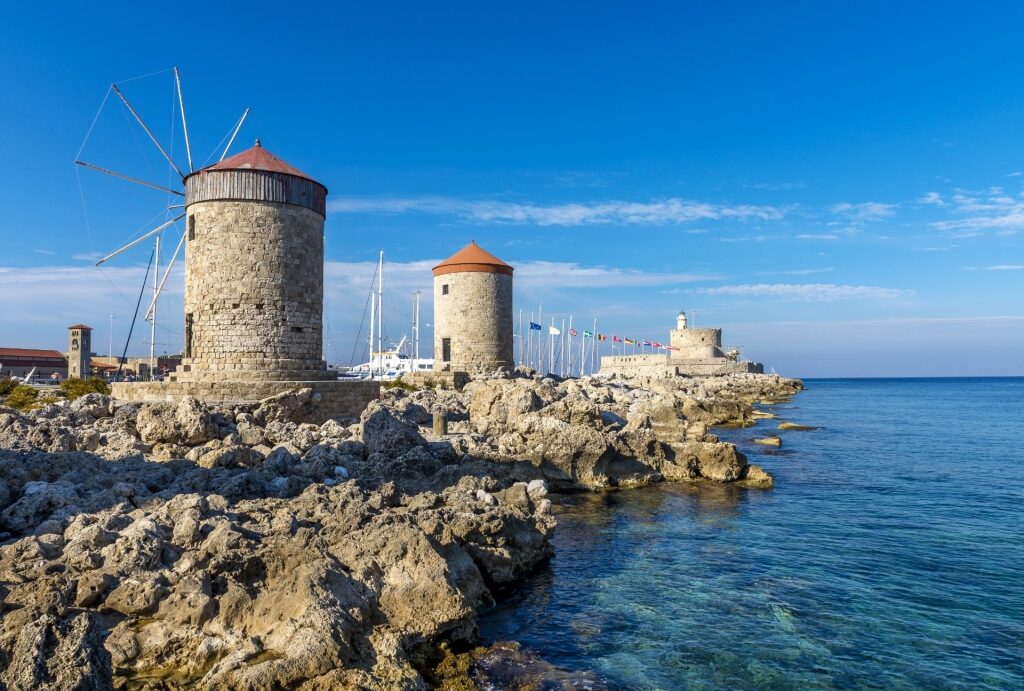
Windmills of Mandraki
On the same promontory as the Agios Nikolaos fortress at Mandraki harbor are three restored windmills that are thought to have been constructed by Genoese prisoners in the 14th century.
Early maps show that there were once 18 such mills here, and excavations have revealed the foundations of a further five to add the surviving three.
This is one of the island’s iconic sites and there are benches along the harbor wall here, making it a perfect place for a late afternoon volta (stroll).
Swim at Elli Beach
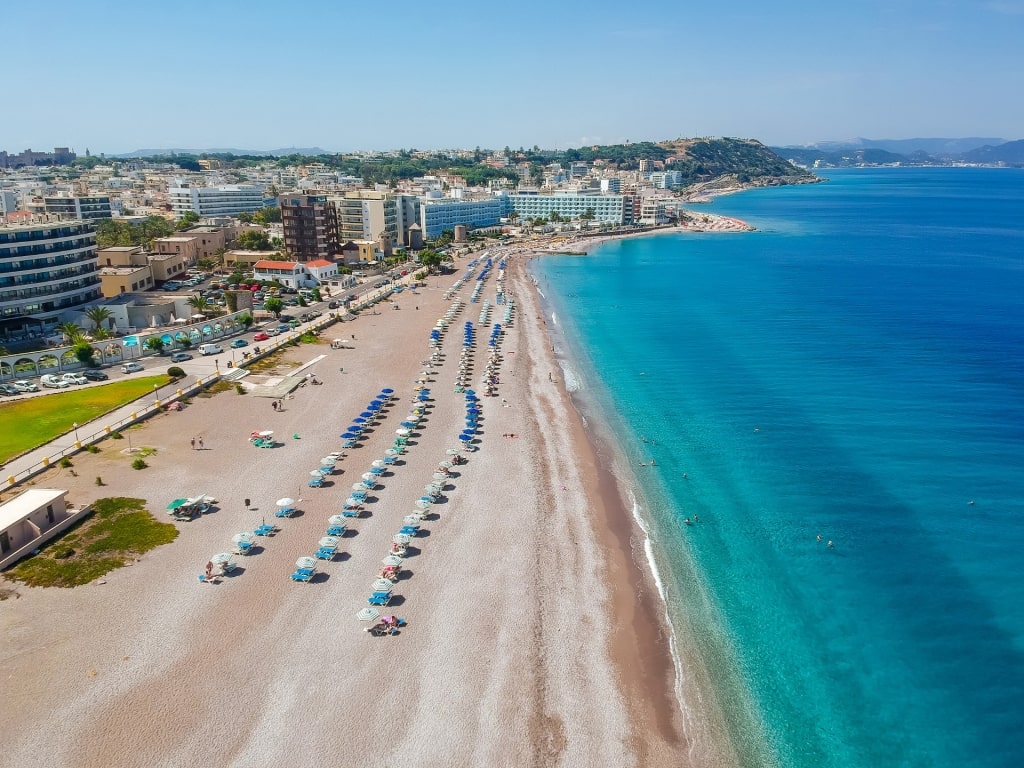
Elli Beach
Technically out of the Old Town in New Rhodes, Elli Beach can serve to provide welcome respite from oppressive summer heat and busy sightseeing. It’s one of the best beaches in Rhodes.
Just a five-minute walk from the Liberty Gate, it sits on the very tip of New Rhodes and offers distant views over to the Turkish coast, offering context to the Ottoman interest in this strategically placed Mediterranean island.
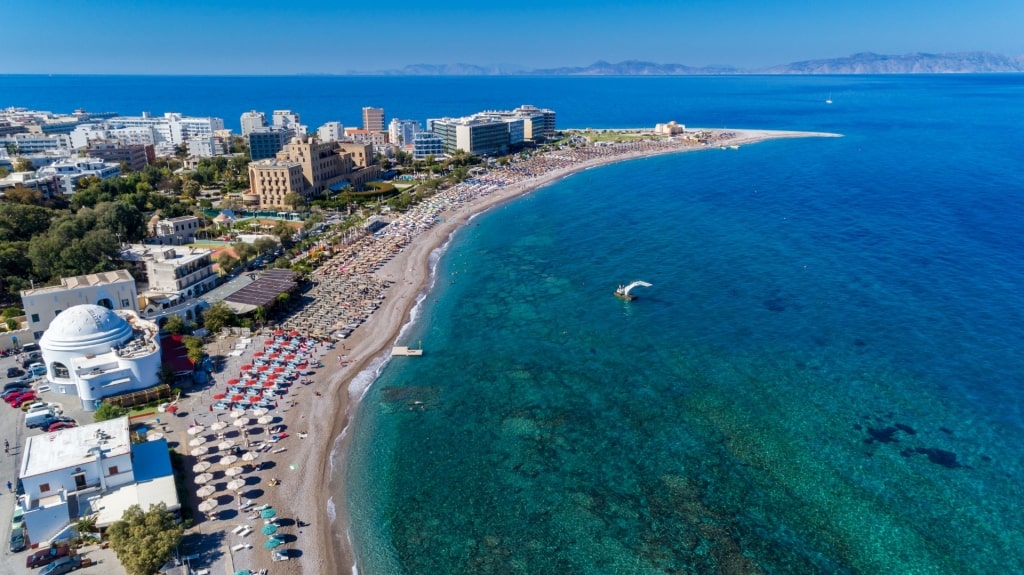
Elli Beach
Some stretches of the Greek beach are more sandy than others, though where to sit may depend on prevailing winds, given there’s an east and west side to the beach.
Look out, too, for water sports operators offering everything from banana boat rides to windsurfing, as well as the Elli Beach “trampoline”, a 20-foot high diving platform for those brave enough to take the leap from the top deck.
This small, bustling neighborhood is also home to Gavriil Harito’s Square, stylish Rhodes Casino, the art deco and quite impressive Rhodes Aquarium, and the Modern Greek Art Museum.
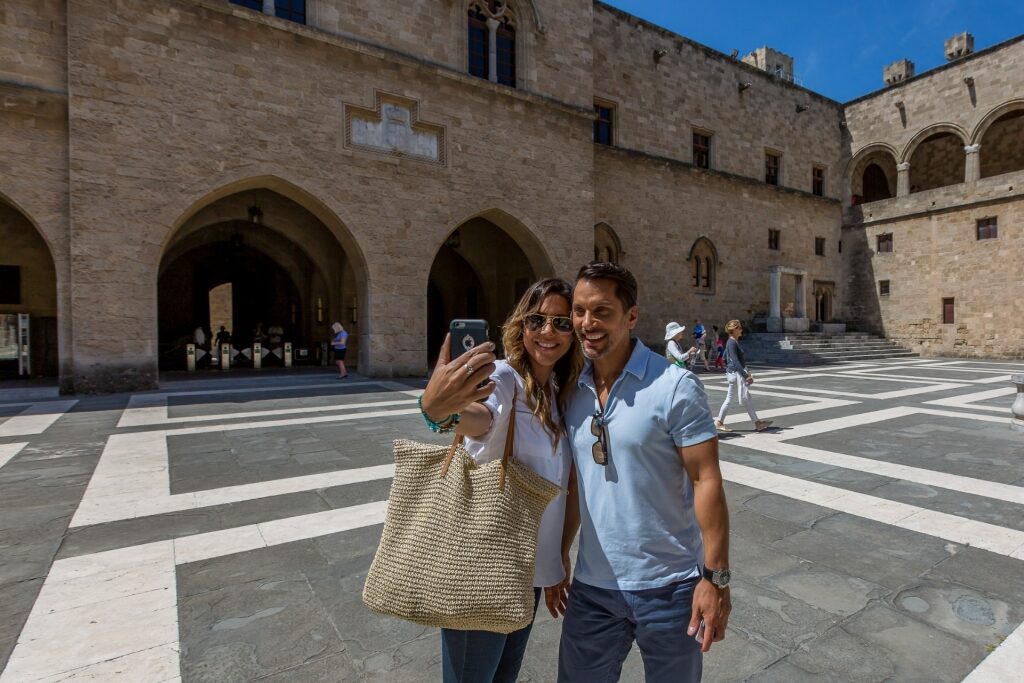
Palace of the Grand Master of the Knights
Ready to discover the ancient wonders of Rhodes Old Town? Browse Celebrity’s cruises to Rhodes and plan your dream cruise.
